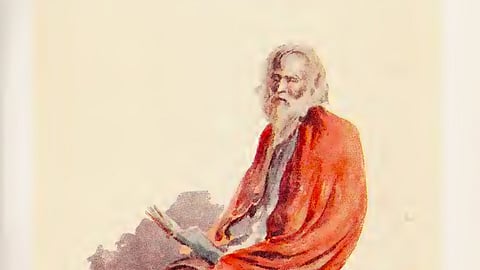- Commentary
- History Vignettes
- Notes on Culture
- Dispatches
- Podcasts
- Indian LanguagesIndian Languages
- Support

Read the Previous Episodes
NOW WE CAN RETURN to the point that I had mentioned earlier about the mark of a truly learned person in our culture and society.
Even in the mid-1970s, we had a sizeable number of people who earned their livelihood as poets or singers or bards, performing Bhagavata Melas, Ram Katha, Puranas, Harikathas, etc. These artists were largely illiterate but they had an unmatched power to swoon thousands of people with their renditions and storytelling prowess.
The entire society respected them solely for that reason, because they had that education. They carried copious amounts of our cultural treasure in their head and heart — the Ramayana, Mahabharata, stories from our Puranas, Kritis, Devaranamas, folklore, etc.
Sadly, their “educated” children and grandchildren became poorly-paid labourers in mills and factories or worked as waiters in bars and restaurants. But on the larger canvas of our cultural landscape, the loss was primarily twofold. These descendants not only lost the sublime and ennobling education that their forefathers had but their lives were not economically better either. This is how the destruction of cultural education and memory translates into, in real life.
This is savagery, not education.
Which evokes a straightforward question: has the current system of “education” produced happy people?
Think about it.
What we now call as “Dharmic education” was the natural state of our social and cultural life even 60-70 years ago. The very fact that we’re now using Dharmic as an adjective only shows the severity of our loss.
Since time immemorial, a major part of this education was “taught” at home through the behavior, lifestyle, customs, codes, manners, speech, rituals and conduct of the family members. The concept of going to a school formally for X number of years did exist but it fundamentally served a different purpose. This school-going education was also quite minimal and mostly functional in nature. In the interests of space, I can only recommend Dharampal’s The Beautiful Tree, perhaps the best book on the subject.
It is not my contention that we must turn the clock back. It is both foolish and impossible. My heartfelt intent and earnest plea are for all of us to do a detailed, deep and sustained study of the best elements of our ancient education system and repurpose them to our own period for the benefit of posterity.
The role that the Hindu joint family system played in nurturing and preserving this education has all but been forgotten. A good way to verify the indomitable strength and the stellar value of the Hindu joint family is to read essays, memoirs, social literature and fiction published during the last 150 years in Indian languages. Today the joint family or the Hindu undivided family is almost extinct even in villages. Plus, with the ongoing rapid pace of urbanization, this process will only accelerate. Add to this the divorce epidemic and the systematic de-Hinduisation of Hindu children in schools and colleges, the future resembles a nightmare.
This is the summary: for several millennia, the Sanatana educational system was inseparable from culture, and culture is not necessarily related to literacy… a cultured man can acquire literacy either by accident or through self-interest. However, the converse is even more true: mere literacy does not guarantee culture. This is why Ananda Coomaraswamy had posed the following question in 1947: Do we Want a Brave New India of Uniformly Literate Mechanics?
To be continued
The Dharma Dispatch is now available on Telegram! For original and insightful narratives on Indian Culture and History, subscribe to us on Telegram.
